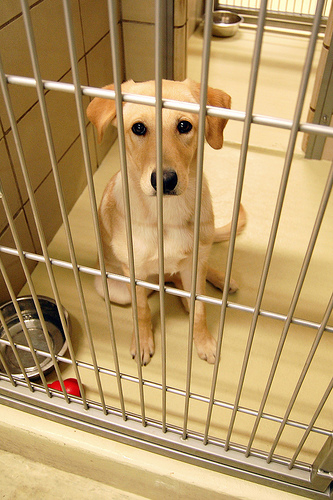
Over the last few days the signs have been getting worse. Your pet isn’t doing well; it is depressed, isn’t eating, and may even be vomiting. You thought it would get better, but it hasn’t and in fact your pet looks really sick. So you decide to take your pet into the veterinarian, who runs a bunch of tests. It is most likely that the animal will be whisked away to a treatment room after the veterinarian confirms a diagnosis of diabetic ketoacidosis. What is diabetic ketoacidosis (DKA)?
You didn’t even know that your pet was diabetic, so how could it have this problem? Diabetic ketoacidosis most commonly develops in animals with undiagnosed diabetes. However, animals with diabetes can develop this problem as well, if their diabetes gets out of control. The reason that your pet will be quickly taken to the treatment room is because DKA is an emergency. These animals look sick because their whole body is being affected by the problem. If the situation is not addressed quickly, DKA can cause irreversible damage. This doesn’t mean that your pet will be fixed overnight. Even uncomplicated, mild cases of DKA often stay in the hospital for two or three days.
Before we explain DKA, let’s review the meaning of diabetes. Diabetes is a situation where the body does not have enough insulin. Insulin is needed for cells to absorb glucose (which is crucial for normal cell function) from the blood stream. When cells don’t have insulin, they don’t absorb enough glucose and the cells starve. This starvation causes the liver to release more glucose into the blood stream. But without insulin, cells cannot absorb the glucose that is in the blood, and they continue to starve. This is how the vicious circle goes on.
Usually diabetes is caught at this point, and the pet is started on insulin injections. This is a simple solution that brings the problem under control. But if the diabetes isn’t caught at this point or if the insulin injections aren’t working, the next step can occur. The next step is diabetic ketoacidosis.
In addition to producing more glucose (the first step), in DKA the liver begins to produce ketones (by-products of fat metabolism). Without enough insulin, there is no control of fat metabolism. So the starved cells tell the body to break down fat (for energy) and release it into the blood stream. This fat is taken up by the liver. The liver is so overwhelmed by the amount of fat that it starts to convert fat into ketones, and releases these ketones into the blood stream.
A normal liver produces a small amount of ketones every day. But in DKA, the liver produces way too many ketones. These ketones are responsible for the signs you see in your sick pet. First of all, ketones make the blood acidic, hence the term diabetic “keto” “acidosis”. Excess ketones also cause the body to produce more urine. The combination of acidic blood and urinating too much dehydrates the animal and dehydrates the cells. Dehydrated cells don’t function well and can even die. This is why DKA is an emergency.
Very often animals develop the signs of DKA when they have another disease in addition to diabetes, such as inflammation of the pancreas, infection, or kidney disease. These diseases stress the body and cause stress hormones to be produced. These hormones also inhibit insulin production and make the insulin shortage even worse. If your pet has another stress-causing disease when it is being treated for DKA in the hospital, this disease will be treated at the same time.
We already mentioned that treatment will take at least 2-3 days. Treatment at the hospital consists of giving your pet insulin and carefully monitoring it. DKA is not an easy problem to treat. Serious cases of DKA sometimes do not have a good prognosis. In complicated situations, up to 30% of animals will die or have to be euthanized in the hospital.
As long as you spend time with your animal every day, you will notice when it isn’t feeling well. DKA is not the only disease that causes signs like depression, not eating, and vomiting. Make sure you bring your pet to the veterinarian if it ever develops these signs. The sooner diabetes or diabetic ketoacidosis is caught, the more likely you and your veterinarian will be able to get your pet back to normal!
By Ashley O’Driscoll – Pets.ca writer
 5 Cute Dog Toy Storage Ideas
If you have a dog and/or mul
5 Cute Dog Toy Storage Ideas
If you have a dog and/or mul
 How to Calm a Dog During a Thunder Storm
Does your dog go absolutely
How to Calm a Dog During a Thunder Storm
Does your dog go absolutely
 Are Vaccines Bad For Your Dog?
The vaccine controversy. Eve
Are Vaccines Bad For Your Dog?
The vaccine controversy. Eve
 Learn How to Tell if Your Dog or Cat is Obese and in Poor Health
Is your Dog Healthy?Dog and
Learn How to Tell if Your Dog or Cat is Obese and in Poor Health
Is your Dog Healthy?Dog and
 5 Tips To Reduce Shedding
5 Tips To Reduce Shedding
Dog hair everywhere? Do you feel
5 Tips To Reduce Shedding
5 Tips To Reduce Shedding
Dog hair everywhere? Do you feel
Copyright © 2005-2016 Pet Information All Rights Reserved
Contact us: www162date@outlook.com